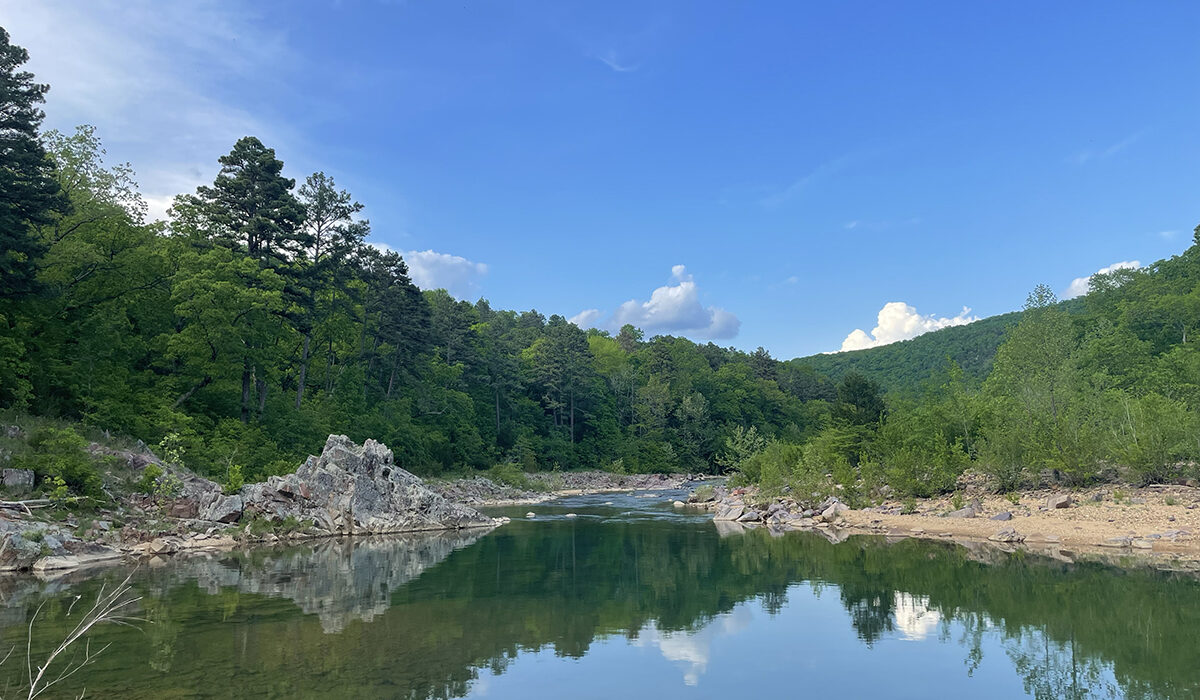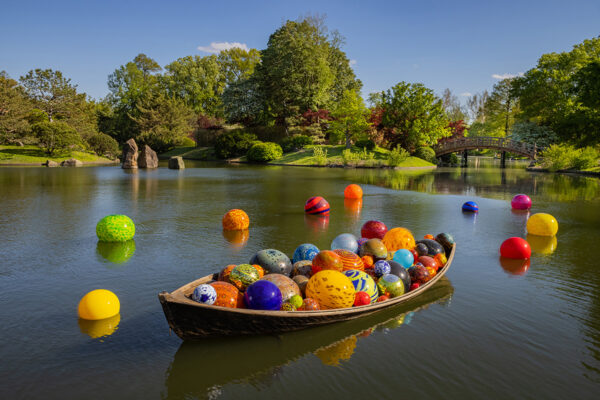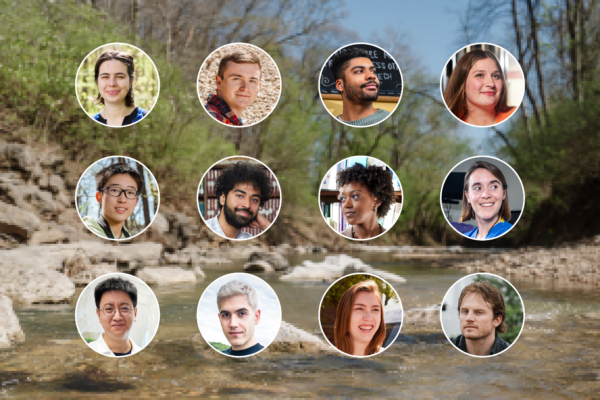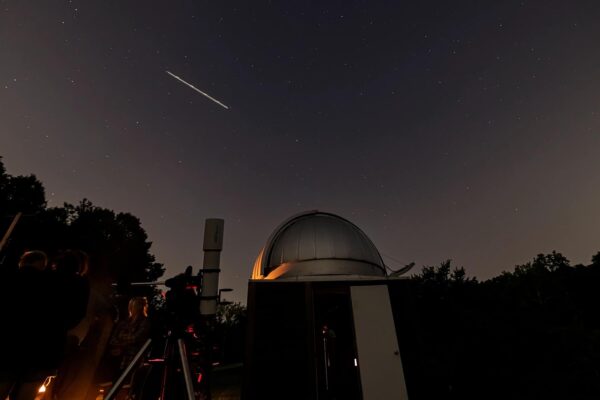St. Louis is known for its long hot summers. But before you retreat into the air conditioning, check out one of the region’s outdoor wonders. Here, leaders of four outdoor-oriented student groups at Washington University in St. Louis share their favorite natural spots in the St. Louis region.
Charlotte Eichman
Club: Wilderness Project
Destination: Taum Sauk Mountain State Park
Charlotte Eichman, a rising senior studying computer science at the McKelvey School of Engineering, became a Wilderness Project (WP) leader to help first-year and transfer students build community, develop outdoor skills and learn about environmental justice. WP leaders spend many months preparing for the group’s fall backpacking adventure, including training trips. On one such outing, Eichman discovered the beauty of Taum Sauk Trail.
“We walked up and found a clearing in front of this small hill,” Eichman recalled. “There was this beautiful vista … on one side, we could see a storm moving in and on the other, a perfect sunset.”
Taum Sauk Trail, located about 100 miles south of WashU in Taum Sauk Mountain State Park, is a rugged 35-mile section of the much longer Ozark Trail. Those up for the challenge can expect some top-notch swimming holes and plenty of nearby camping destinations.
For those wary of longer hikes on rougher terrain, Eichman recommends reading up on Wilderness First Aid (WFA) practices or even taking the two-day certification course.
“Educating yourself can be empowering and help build confidence in new situations,” she said. “WFA training turned me from someone who liked the outdoors into someone who feels much more self-assured outside.”
Sam Ko
Club: ESA SEEDS STL
Destination: Lone Elk Park
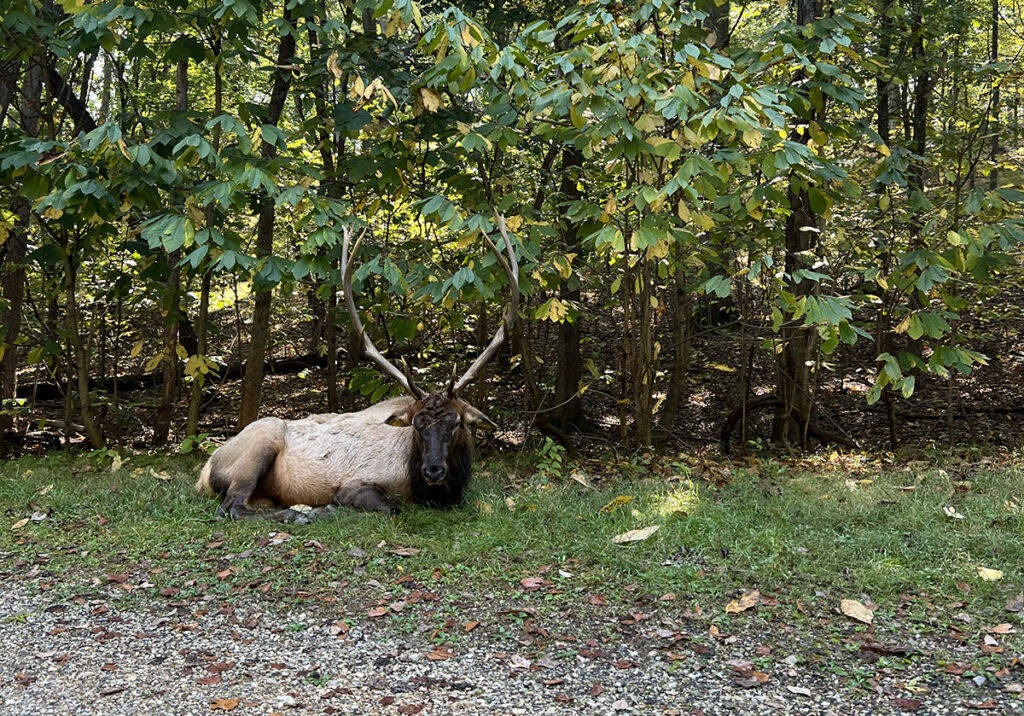
Sam Ko, a rising senior studying environmental biology in Arts & Sciences, is the diversity and inclusion chair of ESA SEEDS STL, the St. Louis-based chapter of the Ecological Society of America Strategies for Ecology Education, Diversity and Sustainability. The club, which includes college students from across the city, connects those typically underrepresented in science, technology, engineering and math (STEM) fields to resources, opportunities and professional support. In addition, Ko has a goal of getting club members together outdoors.
“For the last two years, SEEDS has hosted a free hike at Lone Elk Park,” Ko said. “If you are someone who really likes animals and gets excited about them, you can just frolic around and see elk and bison, as well as many species of birds, insects and reptiles, depending on the season.”
Lone Elk Park is a 30-minute drive from campus and offers short, welcoming trails suitable for different ability levels. Given its proximity to the city and its brief routes, Lone Elk is ideal for quick outings. The park is also next door to Tyson Research Center, where Ko is participating in a summer fellowship.
“I wish people knew more about Tyson’s myriad resources and opportunities for those interested in the environment beyond recreation,” Ko said. “I really think it’s one of WashU’s hidden gems.”
For those curious to learn more, SEEDS hosts an annual Tyson Research Center tour in the fall.
Caleb Aguirre
Club: Outing Club
Destination: Shawnee National Forest
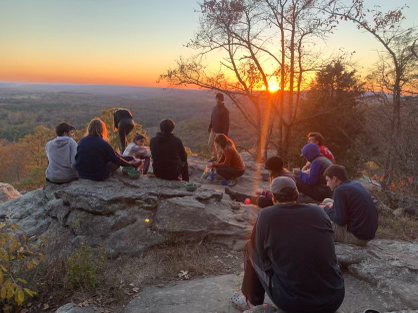
Growing up in Denver, Colo., Caleb Aguirre could watch the sun set over the Rocky Mountains. He didn’t understand why people raved about sunsets in the flat Midwest. That is, until he visited Shawnee National Forest during his sophomore year and witnessed an exuberant sunset over its rocky bluffs.
“The colors were incredible, and it felt like we had front-row seats to its unfolding,” he recounted.
Aguirre, who graduated in May with degrees in political science and in English from Arts & Sciences, served for three years as a trip leader for the Outing Club (OC), a student group that takes WashU undergraduates on a wide range of low- or no-cost outdoor trips. His visit to Shawnee came early in his OC tenure, making it all the more eye-opening.
A two-hour drive from St. Louis, in southern Illinois, Shawnee boasts almost 300,000 acres of forest trails, scenic cliffs and waterfalls. Hikers can traverse the park’s 300 miles of trails, like Garden of the Gods recreation area, and camp at designated campsites or in the backcountry.
Aguirre encourages new hikers to utilize online apps with detailed trail maps, such as AllTrails, and to check out digital resources like REI’s packing list. In addition, OC lends gear for free during the school year.
Evan Sharafuddin
Club: Gateway to the Great Outdoors
Destination: Babler State Park
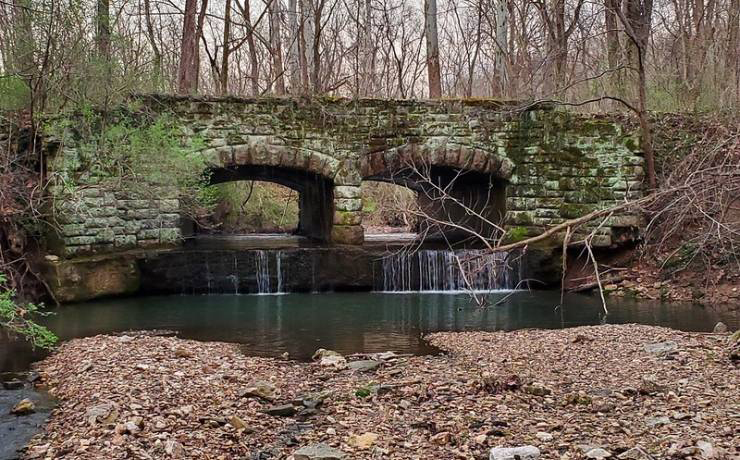
Evan Sharafuddin, a rising senior studying electrical engineering at McKelvey Engineering, loves hanging out with the class of fourth graders he was assigned as a Gateway to the Great Outdoors (GGO) volunteer.
“After many hours sitting inside in classrooms, games and activities that get kids up, out and moving around are perfect,” he said.
GGO, founded at WashU in 2015, provides STEAM education and outdoor experiences for students in low-income public elementary schools in St. Louis and Chicago. Members of the WashU chapter volunteer in local schools giving lessons, chaperoning field trips and supporting camping trips throughout the semester.
For day trips, GGO members frequently take students to Forest Park, a great option for those who do not have a car.
“The southwest corner has a small patch of forest that feels pretty remote,” Sharafuddin said. “It’s a nice spot that feels removed from the bustle of the city.” And for longer jaunts, Sharafuddin said that the year-end camping trip to Babler State Park is always a hit.
For those looking to try sleeping under the stars, Babler, in Wildwood, offers amenities such as toilets, showers, fresh water and barbecue grills, while still being tucked away in the forest.
“It’s beautiful and easy to access, making it perfect for people new to camping or excited to try it for the first time,” Sharafuddin said.
